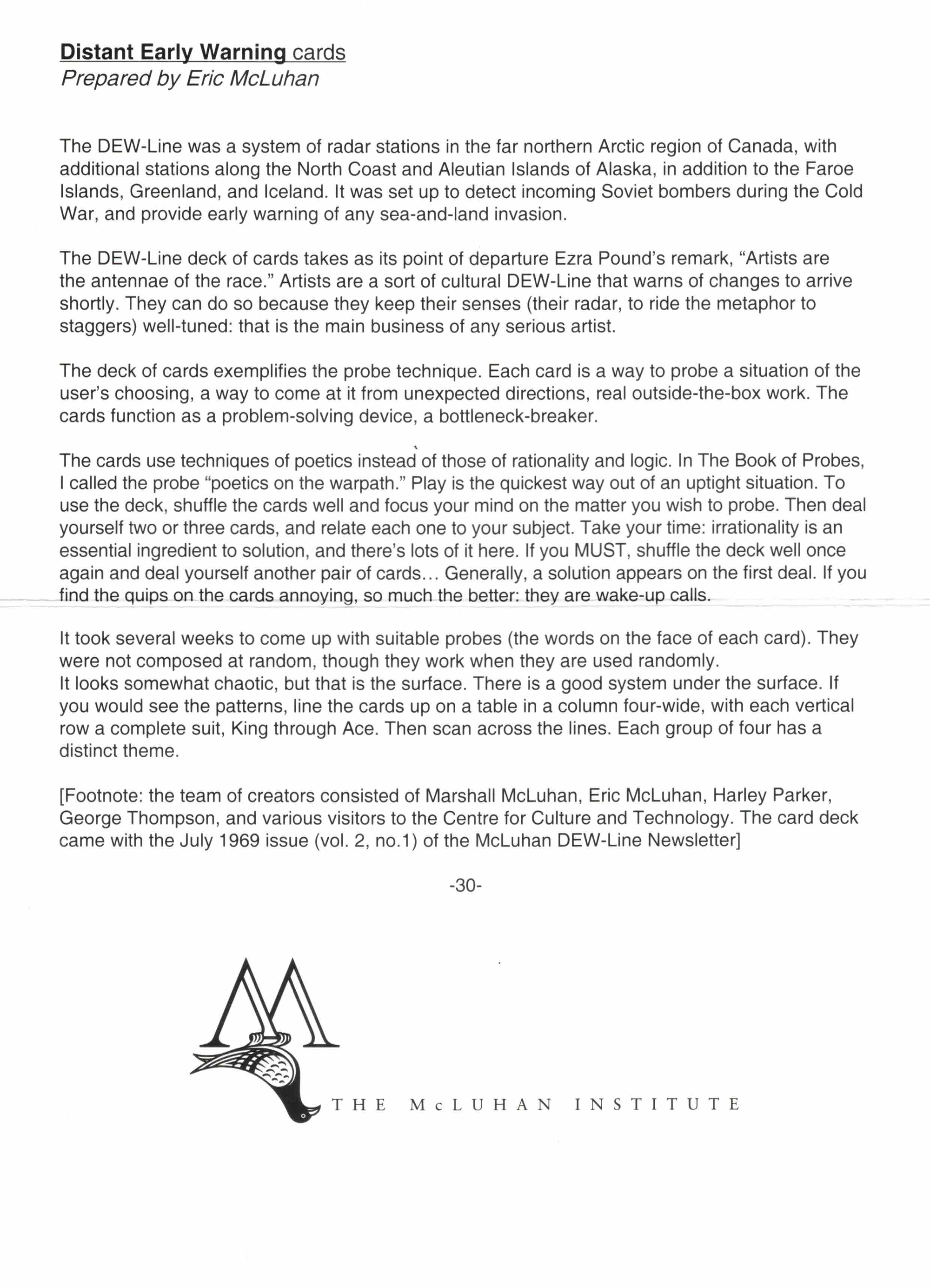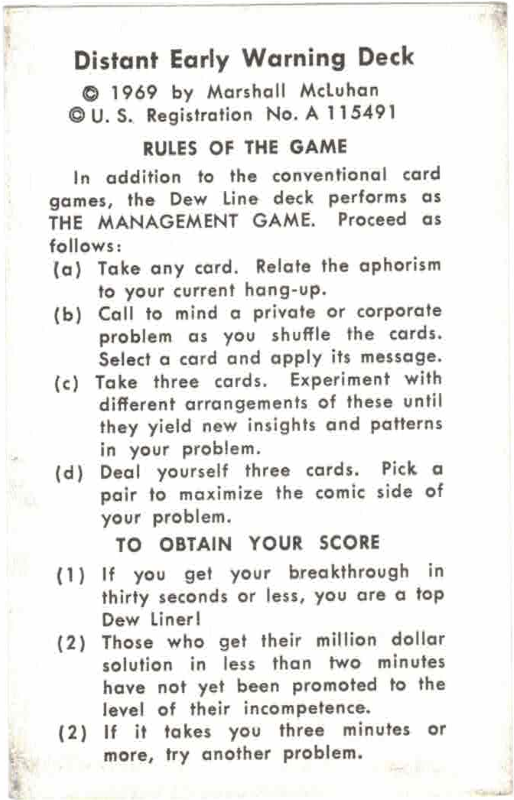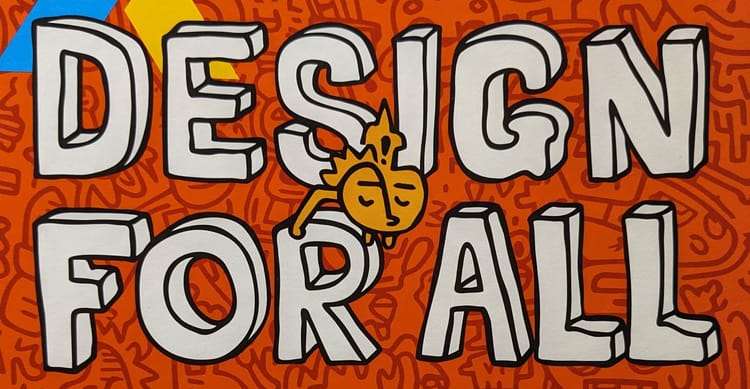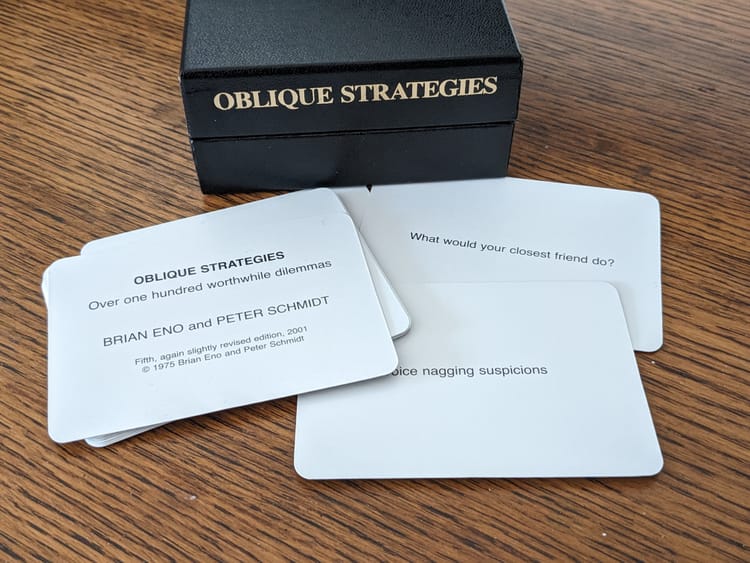The D.E.W.-Line Card Deck

I grew up in a small town in Northwestern Ontario that was home to a Pinetree Line radar base. The Pinetree Line was the ‘southern’ cousin of the DEW Line, after which the card deck in question is named. The radar lines stretched across parts of Canada, and were designed to provide early detection of Russian long-range nuclear bombers coming over the North pole.
I was a kid in the early 1980s and the cold war was alive and well. My fears of Armageddon were stoked by plot lines from movies like Red Dawn, Firefox, and WarGames, and only somewhat tempered only by my age (10) and its intrinsic naivety.
My hometown was definitely not a military town, but we had an entire trailer park—efficiently called “Pinetree”—for the military families that worked at the radar base. The base was shut down in 1987, but growing up with kids whose parents worked at a military base in the forest on top of a mountain outside of town definitely added to the colour of my childhood.
Given that background, when I stumbled across this deck on a shelf in an art gallery in Picton, Ontario one summer, I knew I had to get it.
Marshall McLuhan was a media and culture researcher—“the medium is the message!”—and this deck came out of that work. He published the deck in 1969 with Harley Parker, a collaborator, as part of a newsletter series he wrote. He framed it as “a contemporary I Ching”.

Included with the deck that I purchased was an introductory pamphlet, compiled by Eric McLuhan, Marshall McLuhan's son (and a media scholar himself). It reproduces not only the original pamphlet from the 1969 distribution, but some additional context by Eric.


The deck is standard playing card size, and comes in a black and gold cardboard box. There is a small insert that explains how to use the cards (“In addition to the conventional card games, the Dew Line deck performs as THE MANAGEMENT GAME.”)

The cards in the deck have the suit and pip markings (e.g., three of clubs, jack of spades, etc.) in addition to short phrases or aphorisms. The card design leans heavily on typography with a dog's breakfast of typefaces being employed to add some variety to the card faces.
Reconciliation, probes, and juxtaposition
There is a strong overlap between the approach of this deck and Oblique Strategies: they both present phrases that may not initially make sense on the surface, and ask you to think about a) what the phrase might mean, and b) how it might relate to the question or situation at hand. This is an example of what I like to call reconciliation; the mental act of trying to relate and fit together two possibly incongruous pieces together opens up your mind to approaches you might not have thought of. This is called out on the pamphlet describing the deck:
“[the deck] was designed to use and illustrate one of the most effective of the many techniques for obtaining insight and discovery—the technique of juxtaposition.”
So while the phrases on the cards may not make sense when first read—or, let's face it, upon reading them for the twentieth time—this resistance is deliberate. If the cards contained concise plans, they would be less useful for all but the simplest of challenges.
So why was it called the “D.E.W.-Line” card deck?
Eric McLuhan writes on the pamphlet, that “artists are a sort of cultural DEW-Line [sic] that warns of changes to arrive shortly”. We don't need to dig into the relationship between designers and artists, but I think designers—good designers—can play a similar role as canaries in the coal mine for different communities. We're trained to switch between the macro and the micro, and to consider different resolutions and fidelities of context when working with a system.
Conclusion
This card deck is an interesting piece of history and fun to play with once in a while. I find the phrases a bit too smart for their own good, like a dinner guess who might like to show off what he knows; perhaps it is user error.
That said, I'd likely reach for Oblique Strategies (from Brian Eno and Peter Schmidt) first if I wanted an abstract guide to working through a challenge.



